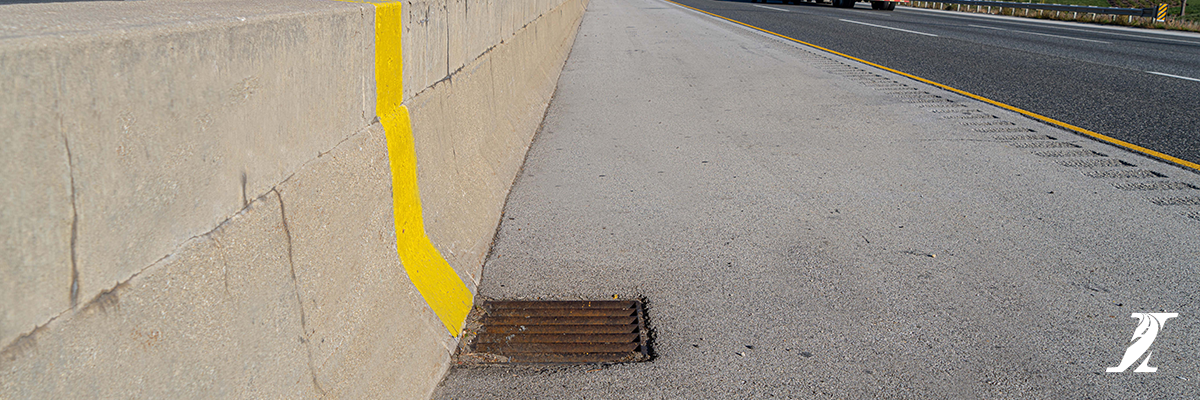As Seen on the Illinois Tollway: Yellow Drainage Markings

Illinois Tollway customers may wonder what those vertical yellow markings are they see on concrete median barriers throughout the Tollway system.
With winter rapidly approaching, now is a good time to provide an answer.
Those yellow markings indicate where catch basins are located, much in the way that underground utilities such as sewers, gas and electric are marked by colored flags, stakes or paint by J.U.L.I.E., the Joint Utility Locating Information for Excavators service.
The yellow markings let Tollway snowplow operators know where these drainage structures are located so they can be sure to clear them when there’s heavy snow or ice storms. Roadway Maintenance keeps an eye on these catch basins year-round – especially during heavy rainfall – to make sure they don’t get clogged up, which could result in flooding on the roadways.
There are more than 24,000 catch basins on the Tollway system, mostly in urban and suburban areas where concrete median barriers are installed. So, it’s not unusual to see the yellow markings about every couple hundred feet apart in some segments of the Tollway system.
Catch basins are installed in the median so that water doesn’t have to cross all lanes of the roadway, clearing water off the road faster and giving it less time to freeze in winter conditions. Instead, the water flows into the median drainage facilities and passes through pipes that generally cross perpendicularly under the roadway to allow water to continue to flow from one side of the roadway to the other.
In rural areas, stormwater is allowed to run off onto grassy medians.
The yellow markings also help Tollway traffic technicians in the Traffic Operations Center use CCTV cameras to quickly identify the location of catch basins in the event there’s an incident on the roadway that involves an oil or gas spill. Roadway maintenance crews on the scene can be directed to make sure the spills don’t make it to the basins. Though the markings aren’t reflective, the bright yellow color makes them easy to see under the LED lighting throughout the Tollway system.
An effective drainage system is vital to preventing flooding and minimizing the environmental impact of stormwater runoff on surrounding waterways. These drainage facilities are part of an extensive network of stormwater facilities that include culverts, detention ponds, wetlands, bioswales and other natural or man-made structures.
Together, this system helps to intercept stormwater runoff, store it and slowly release it farther away from the roadway. Tollway drainage structures are designed handle a 50-year flood event, which is defined as a rainfall event that has a 2 percent chance of happening in a given year.
The Tollway uses best management practices in the design of its drainage facilities to ensure stormwater quality as part of its overall environmental efforts. The drainage facilities capture harmful pollutants such as heavy metals from tires, brakes and engine wear; hydrocarbons from exhaust or lubricating fluids; and chlorides from winter roadway maintenance operations before they reach area waterways. These pollutants stay in the pipes until they deteriorate and become less of an environmental threat.
